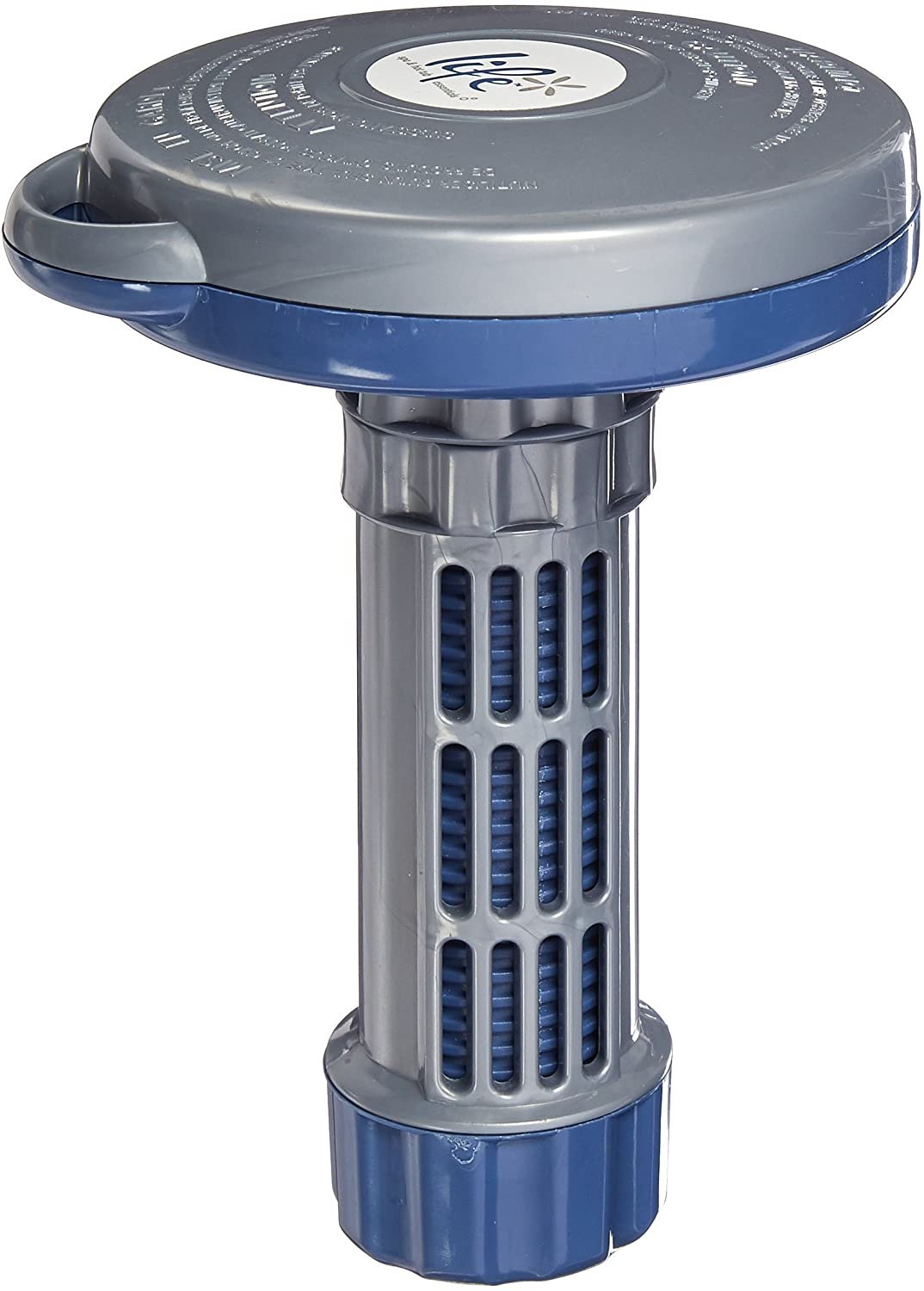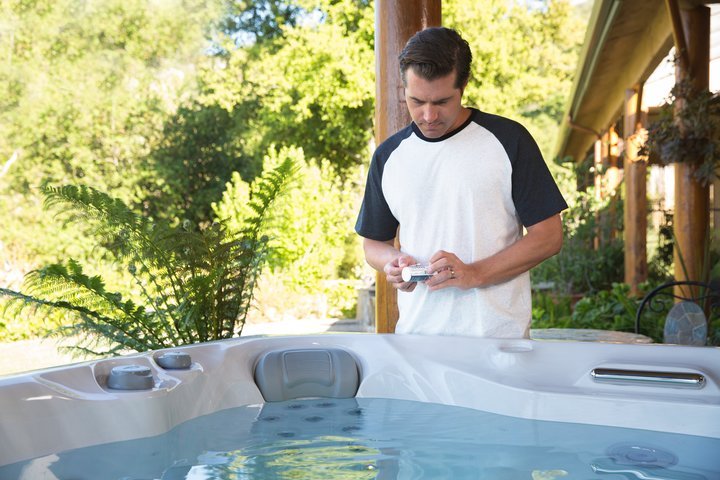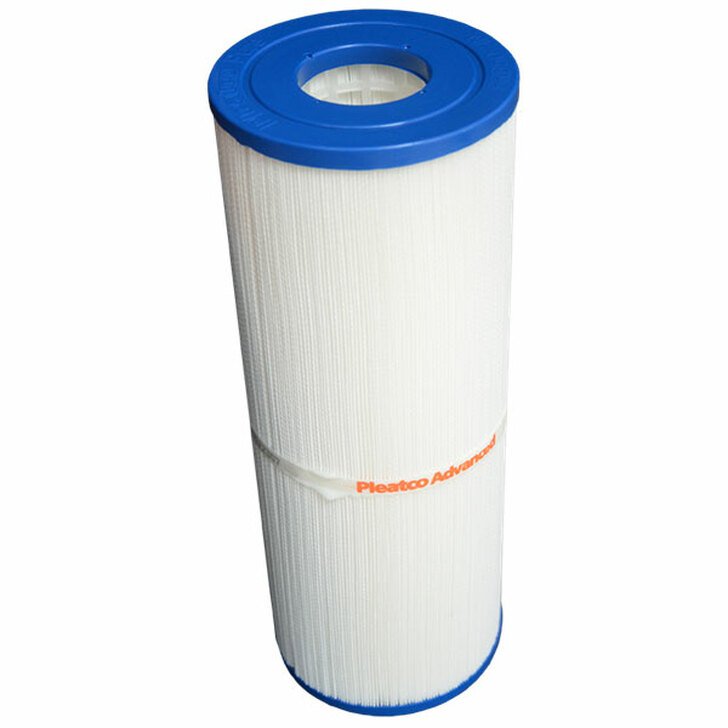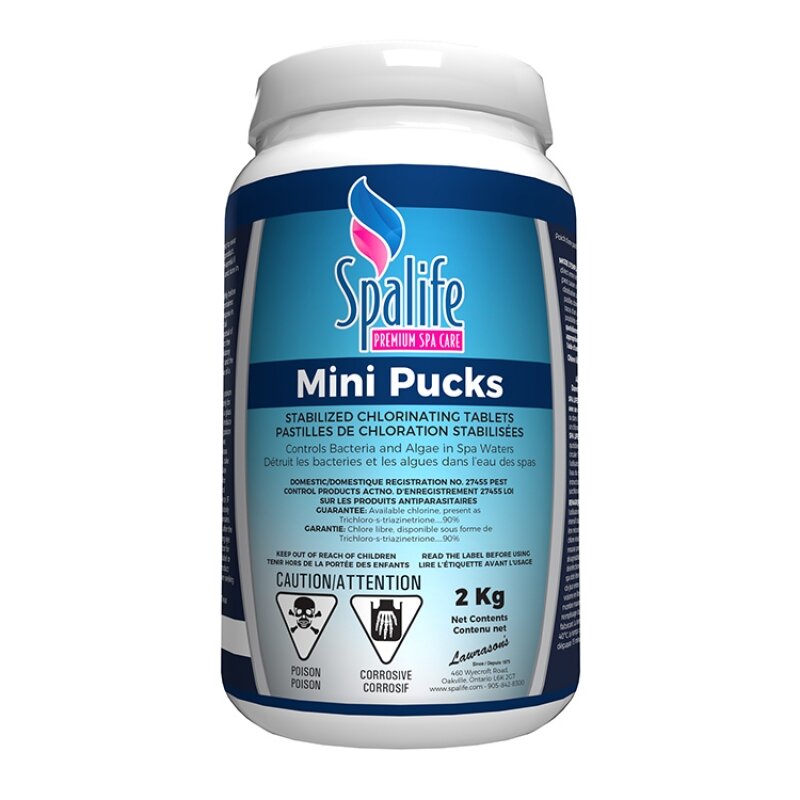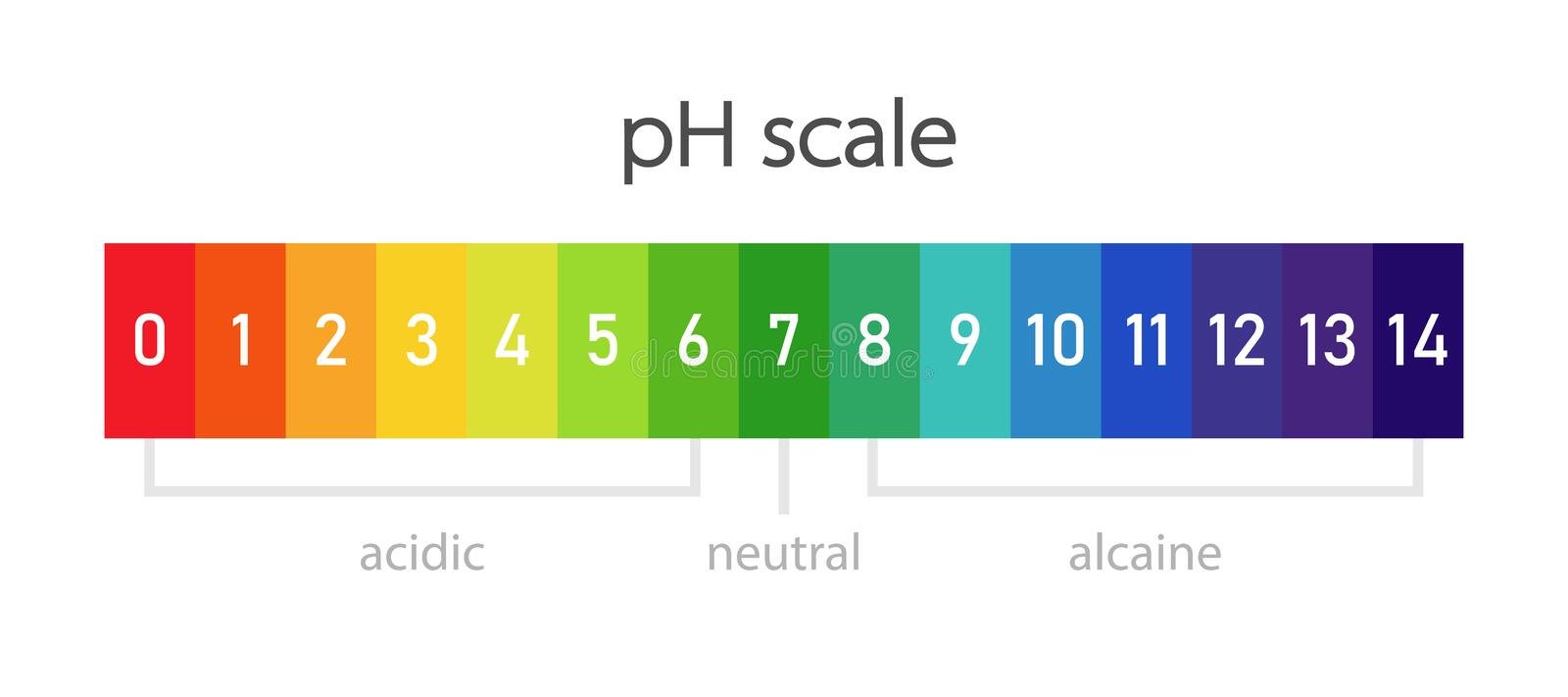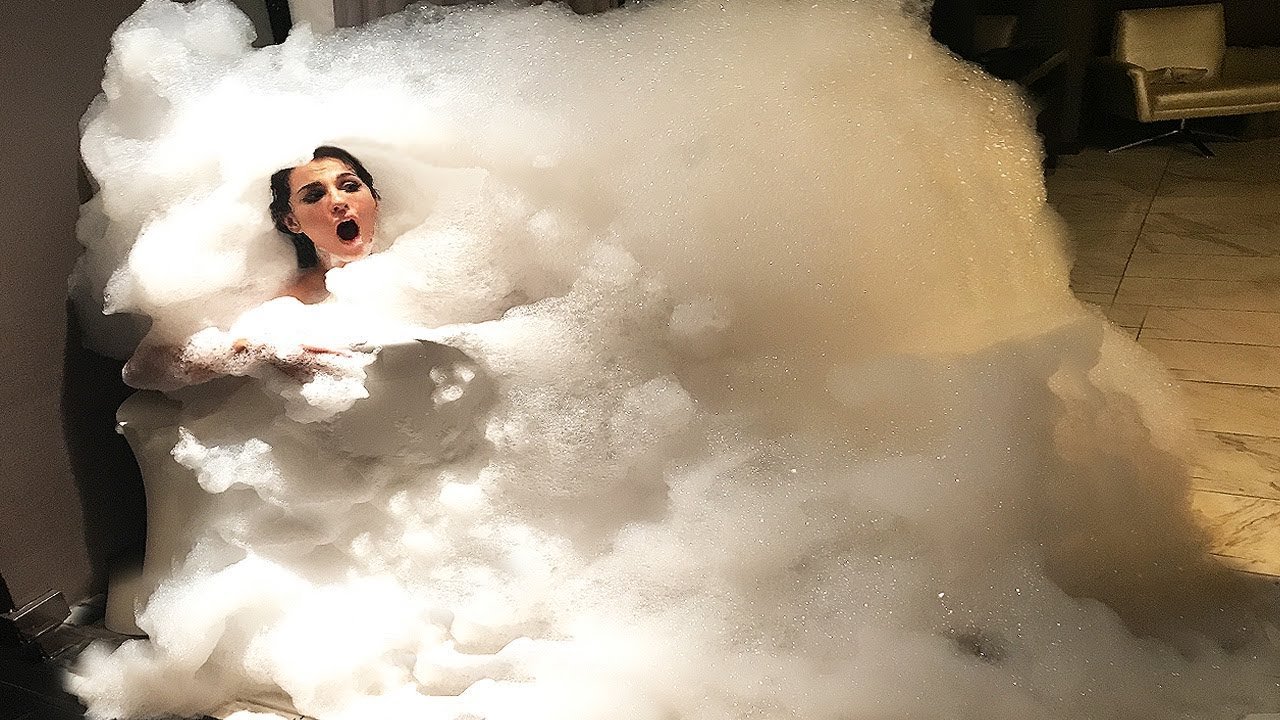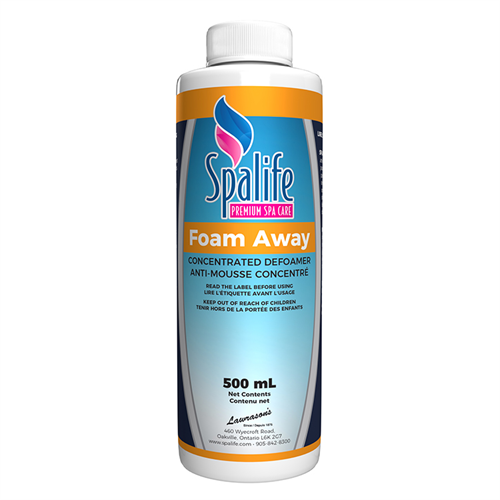This will be your comprehensive guide to hot tub water maintance
Chlorine Pucks, Hot Tub Filters & More!
In this guide we will try to simplify hot tub ownership.
We will go over everything from filters, to drain cycles, and explain the role of each chemical in your hot tub.
Is hot tub water care all that important?
In short, yes. And for a couple important reasons.
1: Safety. Not to scare, but only to inform; you, your family, or your guests can get incredibly sick if they bathe in neglected hot tub water. We are talking about a hot wet environment that people are sweating into. It is a perfect breading ground for nasty bacteria that can cause serious harm. Some diseases you can get from a neglected hot tub include, hot tub lung, hot tub rash, Legionella infection, UTI’s, and even in the worst cases flesh eating disease. But with proper water care it would be impossible for any of these things to live in your hot tub.
2: Protect your investment. There are multiple ways that mismanagement of hot tub chemicals can hurt your hot tub.
The lack of certain chemicals in your water can allow Central Alberta’s hard water to wreak havoc on your hot tub components.
Letting your hot tub run without proper sanitizer can allow bacteria to take a foothold in your plumbing and may be difficult to get rid of even after multiple drain and refills. However, adding too much sanitizer could also burn your hot tub, weakening the integrity of the glue, as well as permanently staining your acrylic, or ruining your lid.
Not adding descaling agents regularly can take a heavy toll on heater elements, pumps, and leave a nasty ring around the lip of your spa.
Remember!
If this just feels like too much, and you didn’t get a hot tub so it could be another thing to take care of, we would be more than happy to take care of it for you! Our Premium Subscribers enjoy worry free hot tub ownership. We come out once a week and treat, balance, and clean your spa for you. Also receive other awesome perks like 20% at our online store!
Index
Filters:
When to check them, when to clean them, and when it’s time to throw them out!
If you have a hot tub, it’s guaranteed you have a hot tub filter or two. There are many hot tub filter shape variations out there, but they all follow the same principle. Your circulation pump will suck water through them, and they will hopefully pick up any bits in your water that aren’t water.
It’s important to always have a filter in your spa, just like your car. If a foreign object gets into your plumbing, it could ruin a pump or spa pak.
When to check your filter?
How often you need to check on your filter will vary drastically on usage. Obviously the more it’s used, the more contaminants it will be picking up, the more you’ll need to check it. A good general rule would be every 2 weeks. Most filters are white, so it’s easy to see if there is anything on your filter. If your hot tub filter is yellowed, or if you see bits of white build up within the pleats, it’s time for at least a rinse. To rinse your hot tub filter, you can simply take your garden hose with a sprayer attachment and spray it from the top-down rotating it with your fingers as you go. Obviously in the winter that won’t do. You may need to bring it into the sink or tub to do a good job.
When is it time to do a chemical cleanse?
If you have rinsed your filter, and it’s still yellow or maybe was looking a little nastier than usual, you’ll want to give it a chemical cleanse. This is done by removing the filter and placing it in a bucket with Filter Free (filter cleaner) and hot water. You’ll let it soak overnight, then rinse it thoroughly with water. You don’t want any of the Filter Free product to go back into your hot tub water.
When is it time to throw it out?
If you have rinsed your filter, gave it a chemical cleanse, and it still isn’t white, it’s probably time to start fresh. Filters will last on average 1 year of usage. Another thing to look for is if the pleats are starting to slightly decompose.
Test Strips:
What to get and how to read them
I think the best way to share this information is via video. Check out our guide here:
What is a sanitizer, and what’s the difference between chlorine and bromine?
Sanitizers:
What is a sanitizer?
Sanitizers, whether it be chlorine, bromine, or salt-chlorine all do the same thing and is the most important chemical you put in your hot tub. The sanitizer’s primary goal is to kill bacteria that could cloud your water, clog your plumbing, generate bad smells, or even get you sick.
The Centre for Disease Control only recommends a few sanitizers as proper hot tub disinfectants, or “Primary Sanitizers”. These include: chlorine, bromine and a few mineral sanitizers when used in combination with an oxidizer.
Some hot tubs will have UV light purifiers or ozone generators. These are known as “Secondary Sanitizers” and can not be used alone without Chlorine or Bromine.
What’s the difference between Chlorine and Bromine?
Both chlorine and bromine have their advantages and disadvantages. I’ll help you pick what’s best for you.
Chlorine
It oxidizes contaminants, invading them and destroying them from the inside out. As it works, the chlorine dissipates and turns into a waste product called chloramines. These remnants are responsible for the stinging, drying, stinky reputation chlorine has, and reduce the sanitizer’s effectiveness.
To keep chloramines at bay, you’ll need to add chlorine on a regular basis, usually at least once a week. If it gets really bad, though, and the chlorine isn’t doing the job on its own, you can shock your hot tub to get rid of chloramines. You want to do that on a regular basis anyway, to keep your water clear and pristine.
Chlorine kills contaminants more quickly than bromine does.
Dissipates more quickly than bromine, and therefore needs to be replaced more often.
Can be harsh on the skin, hair, and eyes, especially at too-high levels.
Bromine
Bromine ionizes contaminants, forcing apart their chemical bonds. A good amount of it remains active and working, even after combining with contaminants.
But bromine also produces a waste product called bromamines. While they’re not as noxious as chloramines, they still reduce the effectiveness of the bromine in your hot tub. Shocking is also the solution here.
Bromine is a very reactive element, though not as reactive as chlorine, so it kills more slowly than chlorine.
Bromine has a lower pH than chlorine, so it can help keep your overall water chemistry more balanced, which means less adjusting.
It lasts longer and doesn’t need to be replaced as often.
Bromine is gentler on your skin than chlorine, but can be a bit more difficult to wash off after a long soak.
It is completely up to you which sanitizer you choose. I personally use bromine over chlorine. The most important thing is that you are consistently using a sanitizer in your hot tub.
Safety
Whether you choose chlorine or bromine, DO NOT:
Mix them together in the water. This can also cause a dangerous chemical reaction. If you’re going to switch from one to the other, you’ll need to drain and refill your hot tub, and do a flush.
Mix them together in their dry state, especially the granule forms. This can also cause a dangerous chemical reaction.
Pucks or Granules?
OR
In short, both! Chlorine and bromine have both granular form and puck form. The pucks are designed to give you a slow release of sanitizer in your water and will even allow you to leave your hot tub unattended for up to 2 weeks if unused.
The granules on the other hand are able to give you instant sanitizer. Perfect if you just filled your spa, had guests over, or had those dirty half humans, known as children, in your hot tub. Pucks take too long to go from zero sanitizer level to where you need to be.
Shock:
What is it and when to use it.
Spa Shock is a water treatment that oxidizes (gasses off) dead chloramines, body oils, sweat and other contaminates from your hot tub water.
Spa Shock is commonly available in two different forms. There is chlorine based shock (Sodium Dichlor), which increases your sanitizer levels as well as shocking the water, and non-chlorine shock (potassium monopersulfate or MPS) which is purely for oxidizing the water.
If you’re using bromine as your sanitizer it is very important that you use a chlorine free shock. Discussed in our sanitizer guide, bromine and chlorine can not mix.
The main purpose of spa shock is to break-down organic waste contaminants which cause bad odors and cloudy or foamy hot tub water.
It does this by oxidizing the water, which is the process of rapidly removing the outer electrons from contaminants in the water that the spa shock comes in contact with.
The loss of these electrons makes a contaminant vulnerable to attack at a cellular level, which quickly destroys the molecule.
The oxidizing process also works to eliminate any chloramines that might be present in your water. Chloramines occur when a chlorine particle attaches itself to a dirt particle, becoming tied up. Shocking the water will convert chloramines back to active or "Free" Chlorine.
When to use it.
What is it, and how does it work?
You will want to “shock” your hot tub once a week with moderate use, and once every 2 weeks with light usage. How much shock you use will depend on the size of your hot tub, but it will typically be a cap full if you’re using our SpaLife brand shock.
It is also a great idea to throw in a cap after a party, remember this product takes out body oils and all that other good stuff your in-laws brought with them.
pH:
What is it, why is it important, and how to adjust it.
pH balance measures the relationship between acidity and alkalinity. When these two qualities are equally balanced, water is considered “pH balanced” or "pH neutral."
pH stands for potential hydrogen. The qualities of acidity and alkalinity each result from the potential of hydrogen ions to remain single (increasing acidity) or to bond with oxygen atoms and form hydroxide molecules1 (increasing alkalinity).
What is it?
Knowing the pH balance helps you to maintain the water chemistry of your spa, which is important for your comfort and safety. When pH is too far out of balance, you can lose water clarity, get eye, nose, and skin irritation. Plus an unbalanced pH may damage internal hot tub components. both too high and too low in different ways.
Why is it important?
Why is low pH bad? A pH value below 7.2 means the water is becoming more acidic. Without correction, it will irritate your eyes, nose and skin, reduce the effectiveness of sanitizers, and will begin to corrode metallic hot tub components.
Why is high pH bad? A pH value above 7.8 means the water has become too alkaline, it will allow minerals and metals to form deposits and stains. Plus, it may irritate your eyes, nose and skin, and reduce the effectiveness of sanitizers.
Alkalinity:
What the heck is it, and how to adjust it
What is it?
Water alkalinity is a measure of your water’s ability to neutralize acids. It’s an important part of balancing pH levels and is often called a “buffer” because it helps the water resist drastic changes in pH. Unbalanced alkaline levels can have an adverse effect on your hot tub’s appearance and even affect your skin.
Why it matters.
Low alkalinity is the more serious of the two extremes. It can cause rapid fluctuations in pH, because the water can’t as easily counteract the effects of acids. Such an environment has detrimental effects on your hot tub’s appearance. It can damage and erode its surfaces, while also corroding metal parts, and can also result in unsightly stains. Low-alkaline water also won’t be able to balance the amount of phosphates, which feed algae, resulting in water that is green.
Too-high alkalinity can also result in green water, for a different reason: It can reduce the effects of the chlorine you use to keep algae under control. And while low alkalinity causes erratic pH, high alkalinity typically causes stubbornly high pH levels that are very difficult to lower. A high-pH environment can result in high calcium levels, making the water cloudy or causing “scale,” a hard, crusty mineral build-up.
Both high and low alkalinity at their most extreme can cause burning eyes and itchy skin. At less acute levels, water alkalinity can irritate the top layer of skin, causing it to feel dry and making it more susceptible to damage.
So, what to do about it?
Total alkalinity should be kept at 80–120 ppm. To raise low alkalinity and stabilize your pH, add BUFFER until it’s within the range indicated on your strips.
There is no such thing as Alkalinity Minus, if your Alkalinity is too high, you’ll want to use pH Minus. Just a cap full or 2 a day until it comes down. Remember, don’t dunk your strip into your hot tub until 24 hours after you’ve added any chemical. In more extreme cases, where the tap water is very Alkaline like in Sylvan Lake, you may even want to use muriatic acid. Muriatic acid can be picked up from our shop where we can instruct you on usage.
Clarifiers:
What is a clarifier?
Polymers found within hot tub clarifier create a chemical bond between the tiny debris particles in your water. This bond makes the particles larger and easier for your filter to catch them.
Cloudy hot tub water not only makes your hot tub uninviting, but signals that an underlying issue is present. This can be caused by a buildup of bacteria, algae, or metallic particles, but it is likely a mix of all these combined. In some instances, the fix is easy: balance the sanitizers and clean (or change) the hot tub filter. Yet, even with a decent filter, small dirt and dust particles can pass through the finely woven pleats.
How they work and when to use them
Why it matters:
What causes hot tub water to become cloudy? Hot tubs can become cloudy because of bacteria, algae blooms, and even particles of metal from filling your water from a well or municipal water source. Let’s narrow down how each of these gets into your hot tub and how these can affect the cloudiness of the water.
Hot Tub Clarifier is Not a Long-Term Solution
While hot tub clarifier works well in a pinch, it is not a long-term solution. If you find that your hot tub water is chronically cloudy then you should look at changing the filter, balancing the chemicals, checking sanitizer levels, or using a pre-filter to remove bits of metal and other contaminants the next time you fill up. Cloudy water is hard on your system and will increase the wear of your heater, pump, and plumbing. So, use clarifier as a short-term solution, but also plan to tackle the underlying issue (or issues). Doing so will extend the life of your hot tub's components and make for many seasons of fun and relaxation.
Defoamers:
Bubble baths are fun! Bubble hot tubs are not :(
Bubbles in your hot tub can get old pretty quick, especially when you realize they’re still there every time you go back to use your hot tub. Once you have bubbles they’re hard to get rid of. I’ll go over why you get bubbles, how to prevent them, and then, how to treat them.
How they work and when to use them
Why am I getting bubbles in my hot tub?
1: Detergent. The biggest culprit I have seen is swimwear. If you have hard water, which almost everyone in Alberta does, then there is a lot of soap that doesn’t get out of our swimwear when we put them through the washing machine. The best way to prevent getting laundry detergent into your hot tub is to have a dedicated pair of swimwear just for your hot tub use, and don’t wash them. Or if you’re going to, put them through without any detergent.
2: Body Goop. Another culprit is lotions, shampoos, body oils, sunscreen, and any other product you may have applied on your skin the day of using your hot tub. If you’ve used a skin product of any kind, make sure you have a quick rinse off in the shower before going into the hot tub.
3: Cleaners. Always make sure you use hot tub specific cleaners for cleaning out any part of your hot tub that is going to come in contact with water. Most cleaners are built to “suds up”, and even the smallest amount left on the surface can cause a lot of unwanted bubbles
What can I do about them?
If bubbles have made their way into your hot tub, there’s something you can do about it. I personally use a product called Foam Away that works wonderfully. One little squirt, and you can hear all the bubbles start popping like crazy. It creates an invisible layer on top of the water that doesn’t allow bubbles to form on. The problem is, it’s not a permanent solution. A dosage will only last long enough for you to use your tub in peace one time. Most likely the bubbles will be back by the next day. Hence, why it is so important for you to practice prevention over treatment.
A flush, drain, and refill is the only permanent solution. I use the product Whirlpool & Tub Rinse to flush.
Cover Care:
And how to make them last.
Hot tub lids are unfortunately not going to last as long as your hot tub. But how often you have to change them out drastically depends on how well you take care of them. Lid replacements are not cheap and all that foam from your old lid just goes into a landfill to last a thousand years. I’ll be going over a few ways that you can make your hot tub cover last a long time while staying light and staying pretty.
What causes a hot tub lid to fail?
1: Bad hot tub chemistry. One of the fastest ways to destroy a hot tub lid is with the chemicals you put into your hot tub water. If you have extreme levels of chlorine or bromine in your water, and your lid is closed, those gases are going straight into your lid. This weakens the fabric and plastic surrounding your foam insert. Once this has been eaten through, it will quickly start filling with water and becoming extremely heavy. If you find yourself will high levels of sanitizer or if you have to give it a high dose of sanitizer, leave the lid off until it’s dissipated. Even half off will make a big difference.
2: Not having a lid lifter. Another reason hot tub lids fail is the lack of a good lid lifter. A quality lid lifter will keep your hot tub lid off of the ground and support it evenly from the middle seam as well as from the bottom. If your lid lifter does not have support for the bottom of your lid, you can purchase “Cover Savers”, which will adapt to almost any cover lifter and give your lid the support it needs. The alternative is your lid may start to rip along the middle crease.
3: Weather. It’s no secret, we got some pretty crazy weather here in Alberta, whether it’s snow rain, hail, ice, all things that can damage your investment. Ideally you’ll want to protect your lid from the elements as much as possible. If you’re not lucky enough to have your hot tub under a pergola, you can invest in a cover cap. A cover cap fits over the top of your hot tub lid like a fitted sheet and protects it from the elements. Especially nice if you’re winterizing it.


